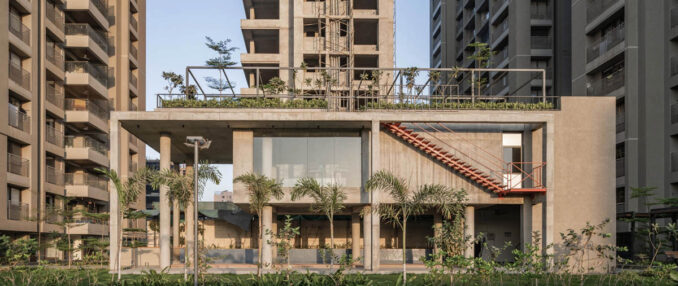
The Lea Shell is a community space developed for high-rise housing and is a peaceful and relaxing social space. Its inclusive design allows the user to interact and be involved with the designed places.
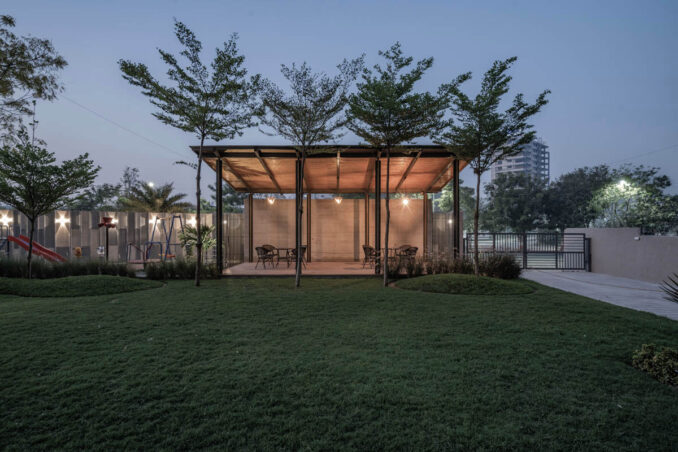
Residential community space – A discourse of intermingling activities…
The open community space in housing is a Residential Park for the families residing in the housing society. UA Lab has designed the residential community space as a ‘shared space’ between families of different cultural diversity. This space plays a very important role in binding people of different ethnic values and cultures together.
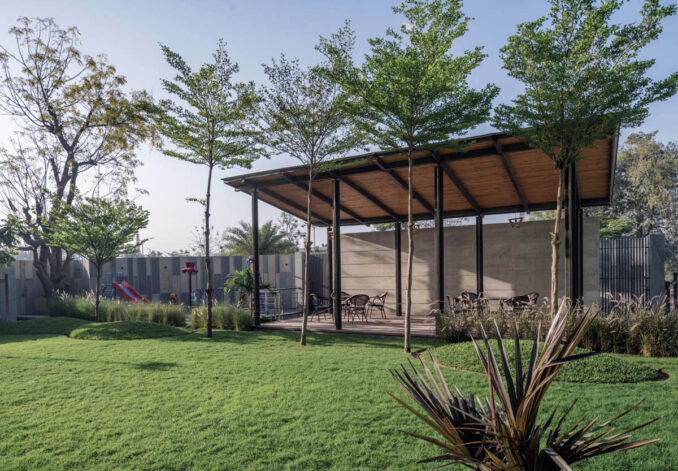
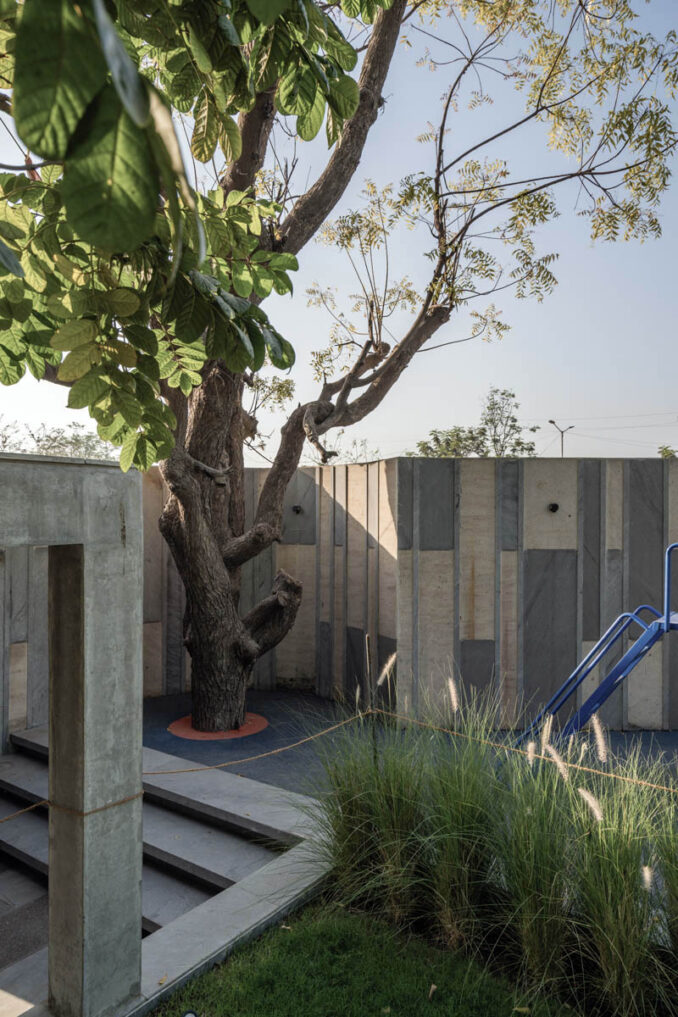
Residential community space – A challenge to create spaciousness…
Under the compact city development, the relative proportion of residential community space is quite tight. It is challenging to create spaciousness for families residing in the neighborhood. The common open space stretches between the building blocks as pathways, small seatouts, pocket gardens, small water bodies, seating pavilions, lawn areas, green mounds, pergola walkways, and shaded walkways.
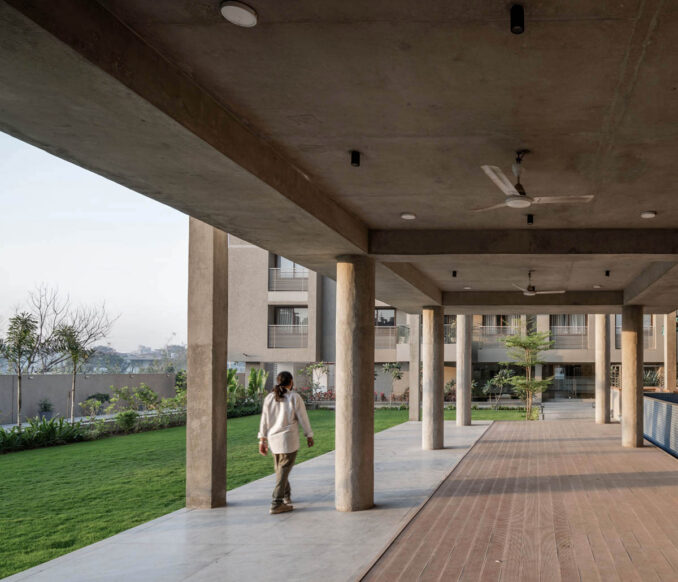
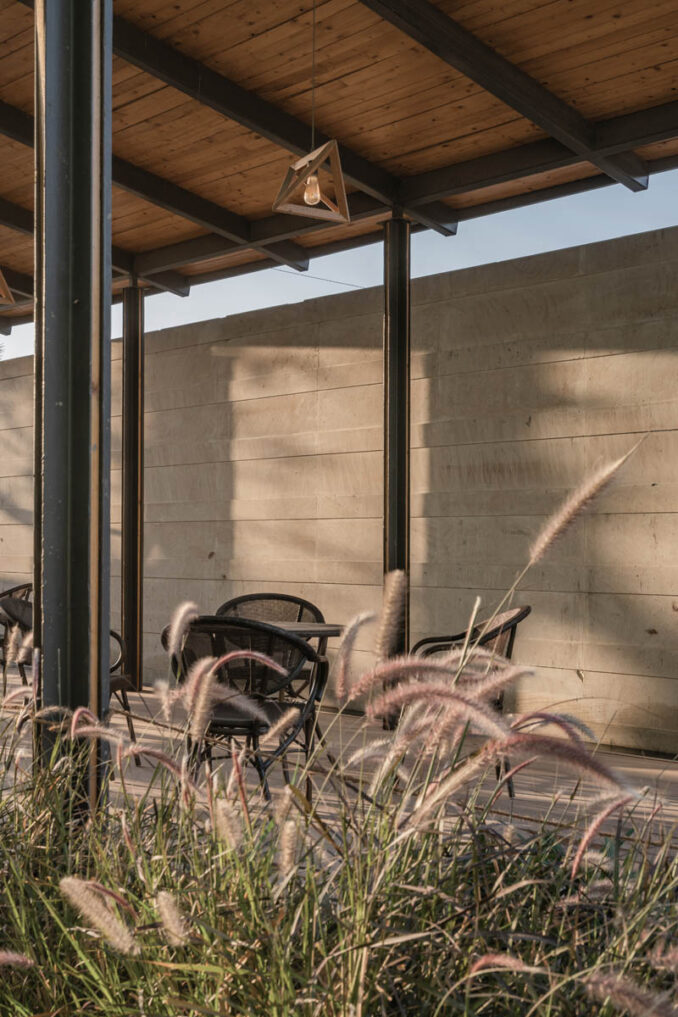
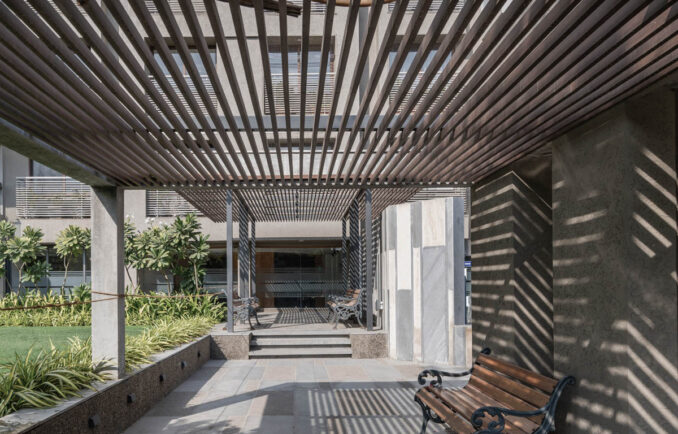
Residential community space – Interlinking nature…
There are about 50 trees planted, providing shade throughout the year. The tree species planted adjoining the walkways and seating spaces stay evergreen throughout the year. They stay green and fresh even during the harsh summer months of city. The vegetation around the buildings creates a feeling of a small flowering home garden. There is a combination of Floral varieties and Colored varieties. The Floral varieties selected are the ones that attract butterflies and bees. The terrace zone is equally populated with lush green planters.
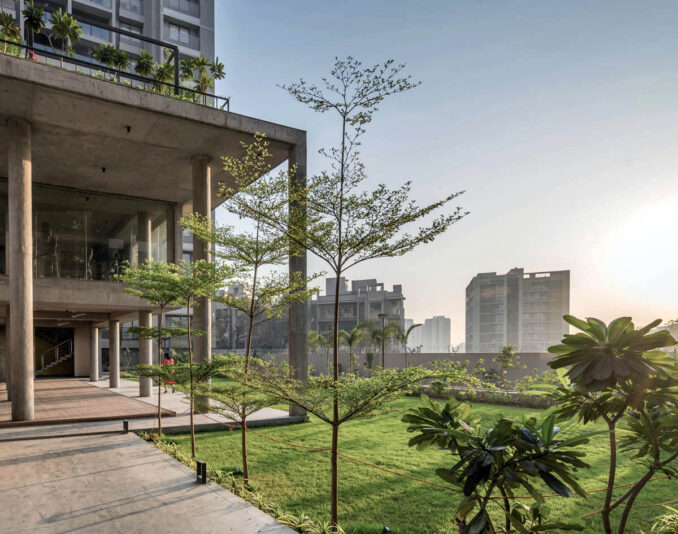
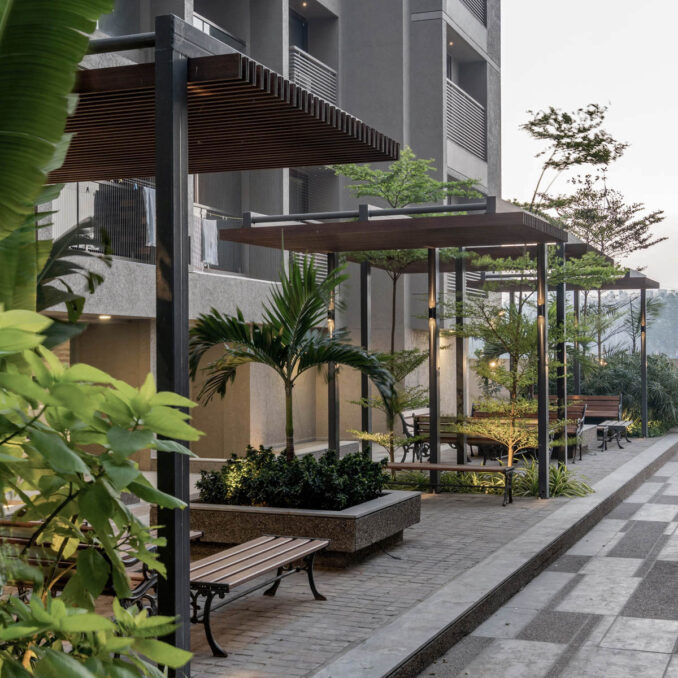
Residential community space – A demand for comfort, relaxation, and safety…
Seating spaces have become the most important part of community space. People are more comfortable sitting in smaller groups with their friends. Different kinds of shaded and covered seating spaces are designed at different locations in the community spaces. These seating spaces are designed as pavilions and pergola spaces. They are connected with adjoining pathways and larger open spaces. Even when one is sitting under a pavilion, there’s a feeling of connectedness to the large open space.
Residential community space – a demand for playfulness and break away from the mundane…
A dedicated children’s play zone is designed. The play zone is edged by kitchen balcony space on three sides. There’s a watchful eye on the kids playing in the play zone. A huge seating plaza is connected with the play zone for the parents to sit and accompany the kids.
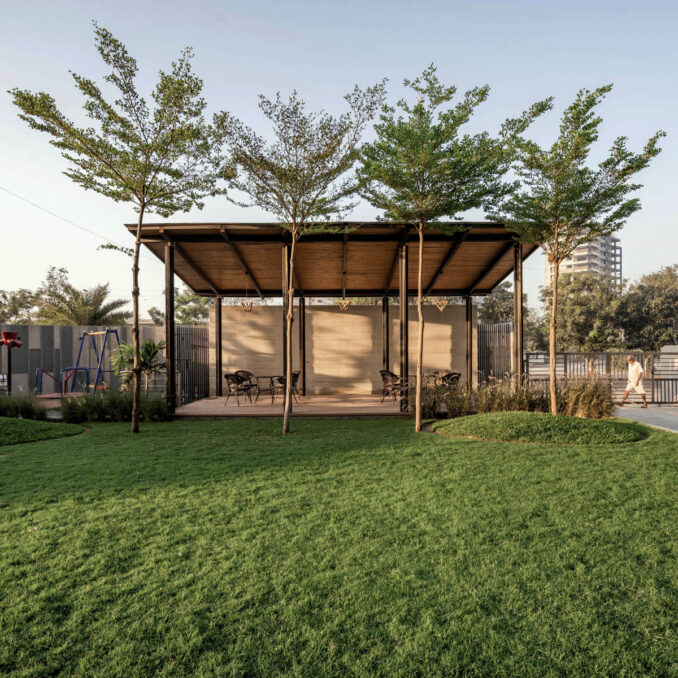
Residential community space – a dialogue of place with variety of scales and volumes…
A central Pavilion is designed to house various community activities. The pavilion is designed as a single concrete shell with varied volumes of interconnected spaces. A simple assembly of vertical linear, circular columns and horizontal flat slabs contributes to the making of this dynamic space.
The volume on the First floor is designed as a solid block in contrast to the volume on the Ground floor. The linear assembly of circular columns shapes the space enclosure for the Ground floor volume. The circular columns are kept freestanding. They define the space but do not impact on the volume of the ground floor. The First-floor level spans two-thirds part of the horizontal space, leaving the one-third as a double-height volume.
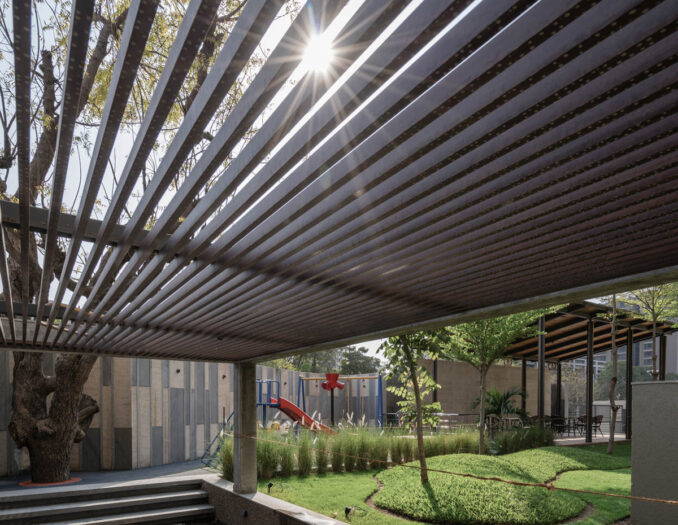
This contrast between mass and void creates an interesting dynamic in space. It accentuates an individual’s experience of seating within the space.
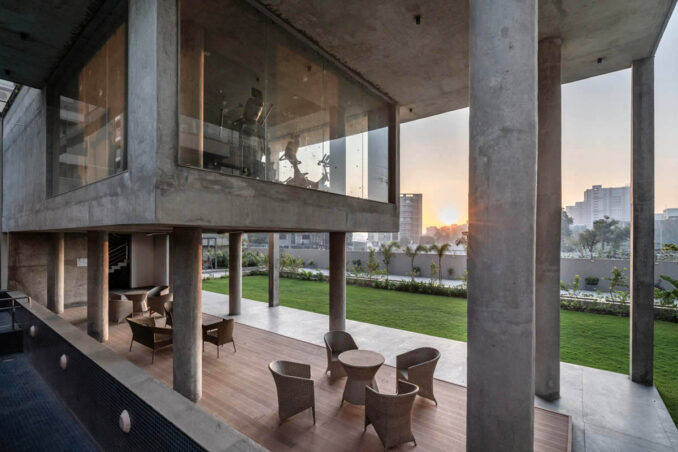
Natural Flooring material with an exposed concrete finish is used for the Pavilion. Consciously we have not used any colors for the Pavilion area. Hence, the entire Pavilion seems to merge with the surroundings. It is only the greens of the Tree canopy, Shrubs, and the Lawn area that one perceives while being in the Pavilion space or moving around it. Blue mosaic is used for the pool area. The staircase is designed as an element. The bright color creates a striking contrast with the exposed concrete finish of the Pavilion façade.
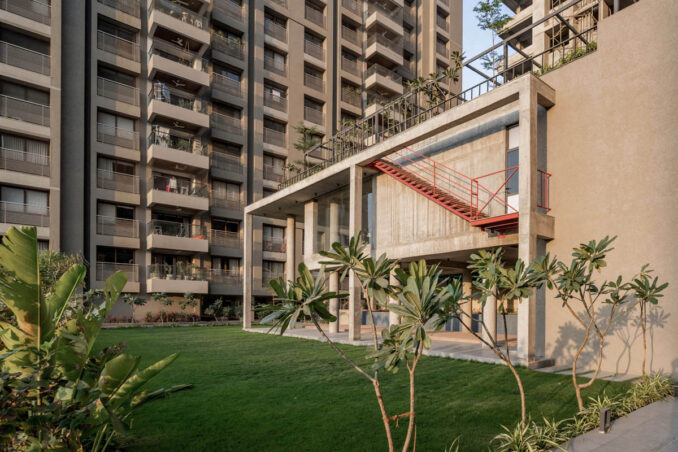
The Lea Shell
Location: Ahmedabad, India
Designer: UA Lab (Urban Architectural Collaborative)
Lead Architects: Vipuja Parmar, Krishnakant Parmar
Design Team: Vipuja Parmar, Krishnakant Parmar, Kruti Shah, Parth Mistry
Photography Credits: Inclined Studio
